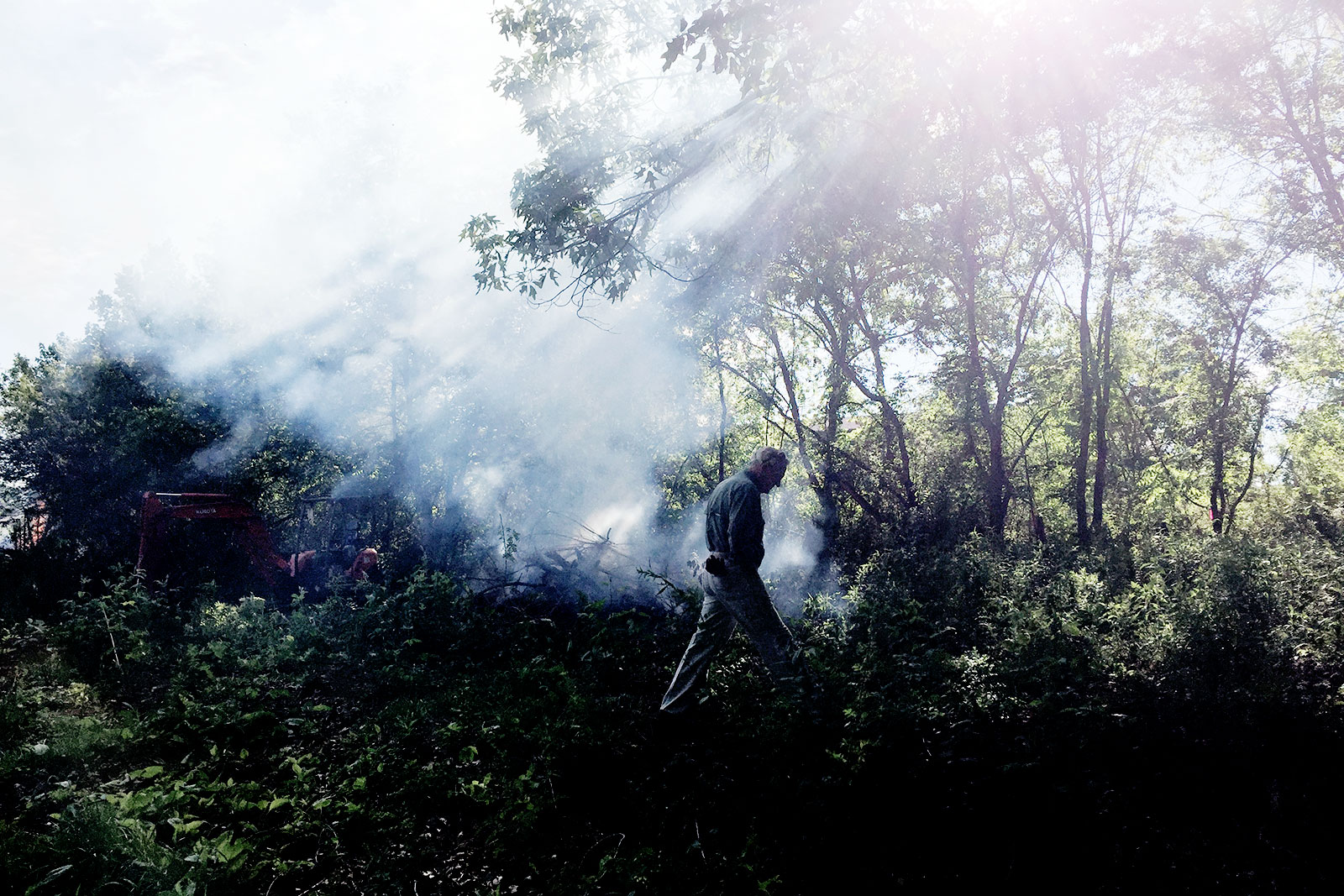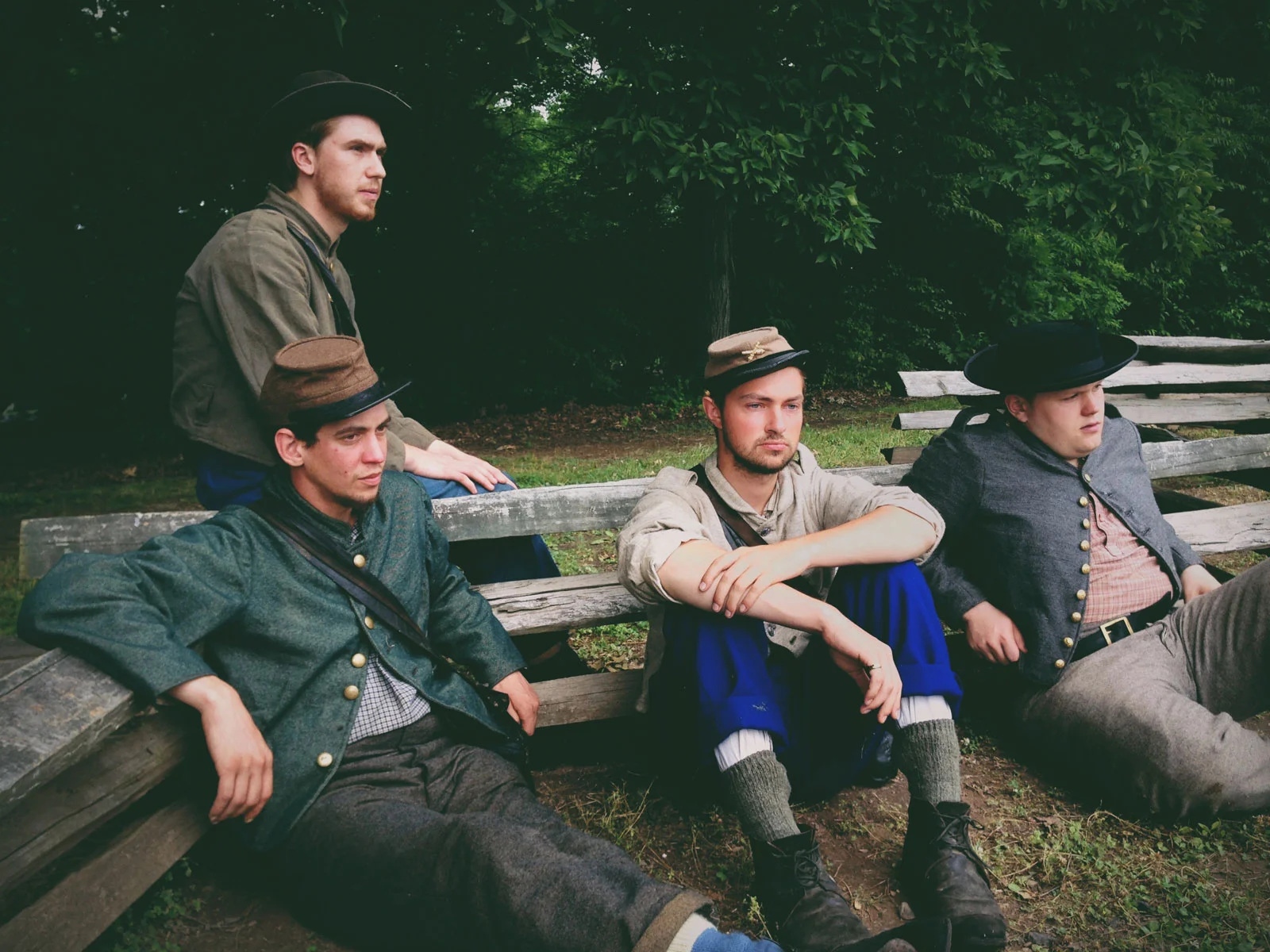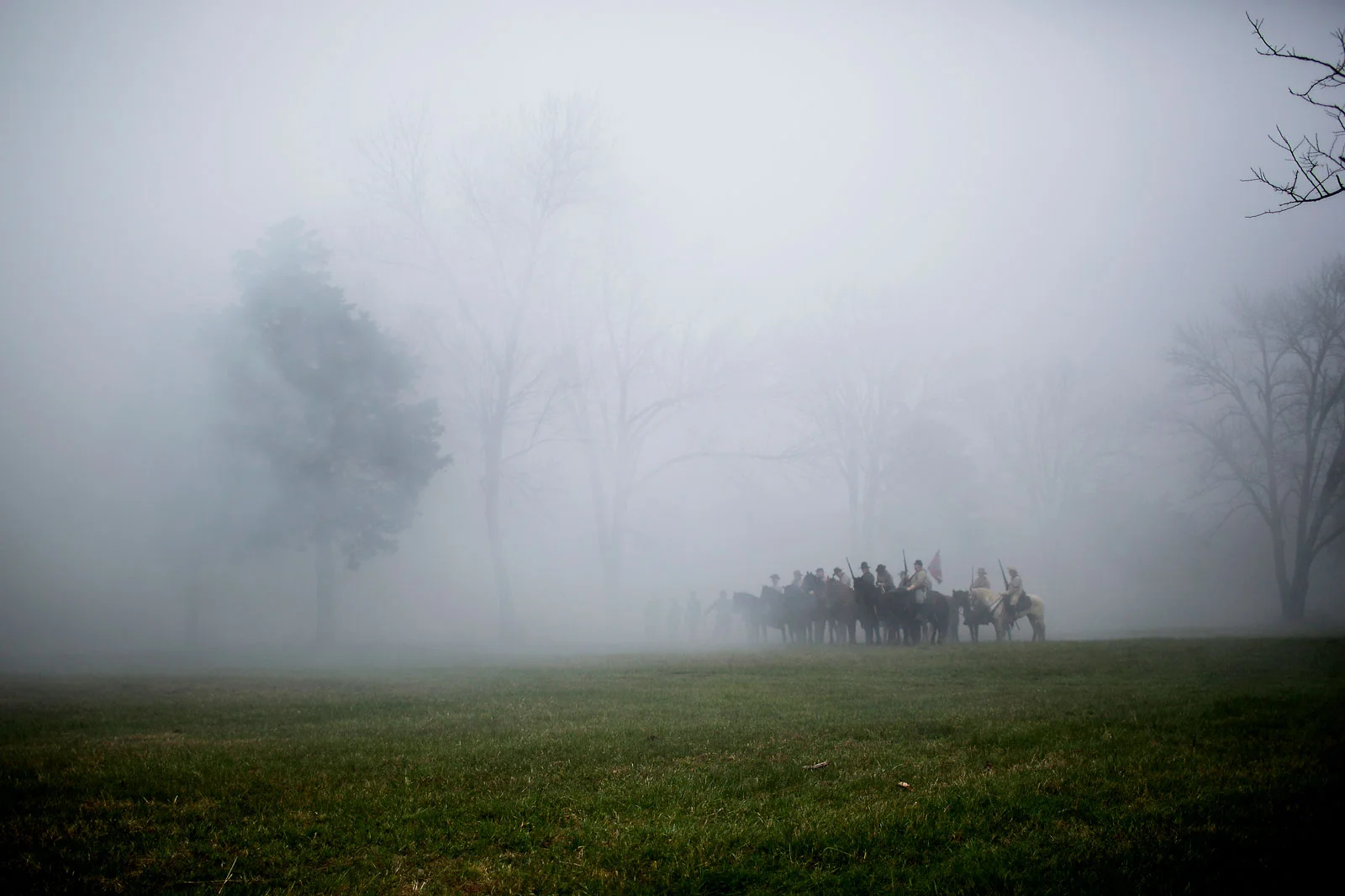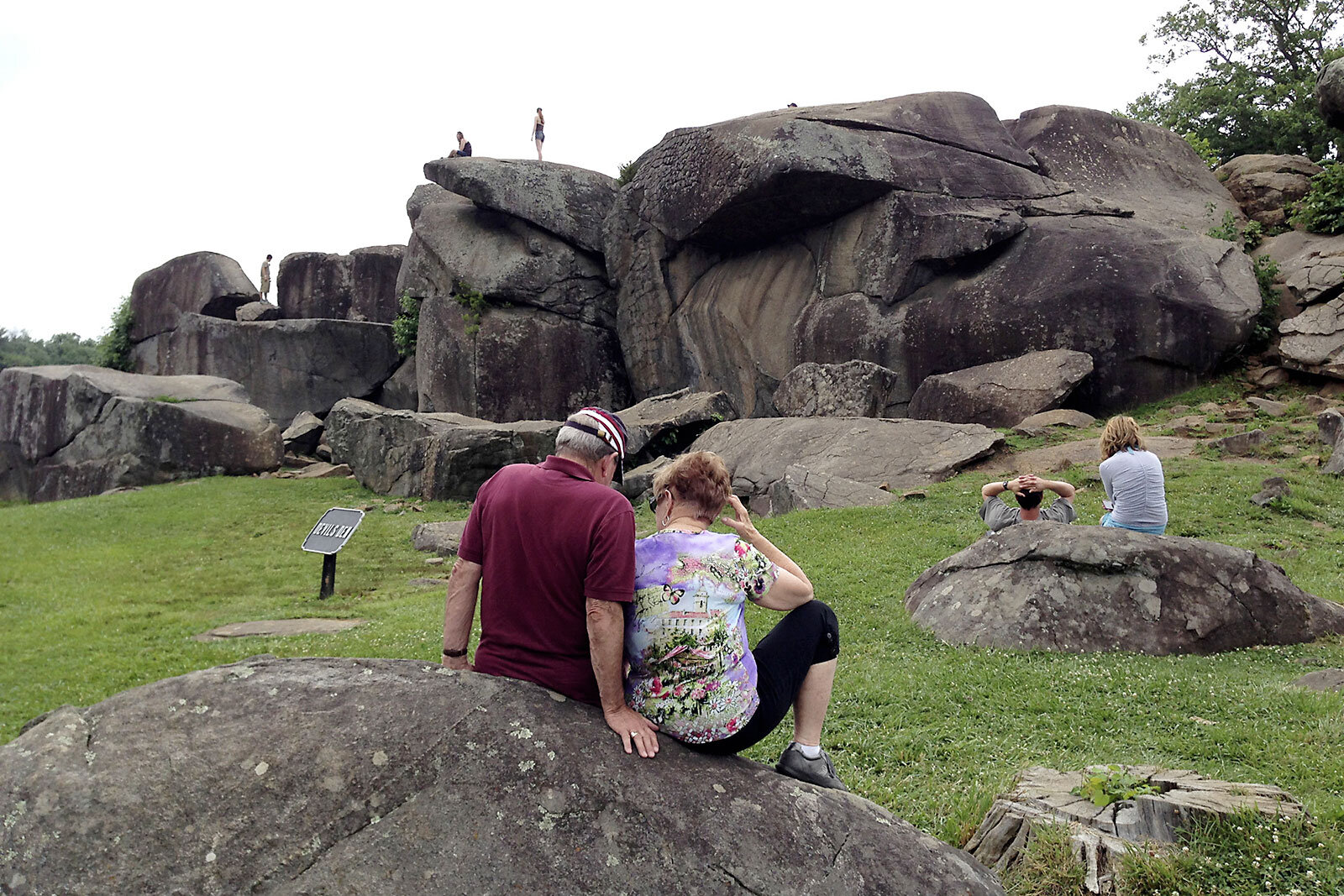LIKE AN ECHO
Like An Echo: Geography and Belonging
Growing up in a military family was an adventure. Endless highway miles and countless hours watching the country rush past were normal. Days Inn parking lots stretch big and broad across this great land. My grandparents, we called them mam-maw and pap-paw, would stay up to greet us at the door. It usually played out the same way. I would fall asleep in the back seat and wake up, staring at the fluorescent glow of a house where everything I've ever known began.
As an adult, the construct of "home" has always been challenging to elaborate. What makes a home, and who says? Can geography be a part of your history, though one doesn’t exist there?
In exploring those questions, I'm revisiting the back roads of industrial eastern Tennessee and, more specifically, the Appalachian Mountains region of western North Carolina. These places are a part of my history, and these memories are mine and shared, connected by space and time of childhood summers, holidays and ongoing visits.
(L-R) Artifacts of my pappaw William J. Wallace and wispy morning light.
My grandparent’s empty bedroom.
The Nantahala River flows near her headwaters in what is now known as the Standing Indian Campground in the Nantahala National Forest. Old-timers remember it as White Oak Bottoms, where a 1927 logging camp grew. Old-growth white oaks are clear-cut by the Ritter Lumber Company and milled in nearby Rainbow Springs to 50,000 board feet a day. “By 1940 … his ( W.M. Ritter ) company had already manufactured and sold three billion board feet of lumber — enough to comprise a solid train over 2,000 miles.”
My pappaw Pete Armes, the remaining sibling of 13 brothers and sisters, remembers butchering hogs with his father and selling the cuts of pork from a mule-drawn wagon through the community that grew up around White Oak Bottoms. He can still remember the railroad tracks Ritter had put down to transport the lumber to the mill.
An Apple Maps glitch miscalculating the Knoxville, TN to Franklin, NC run to be miscalculated. The route reads like past's roadmap to anyone I've ever known, loved or hated along that I-40 corridor. Siri, forget when I crossed the NC/TN line for that wrong girl.
Smoke from cleared brush.
A roadside gem mining attraction geared toward tourists sits abandoned on HWY 441 in Franklin, NC. Macon County, dubbed the "Gem Capital of the World," has attracted dreamers for generations, beginning in 1870. If I remember correctly, this mining facility would sell large buckets of rocky dirt with only the promise of grimy hands. Only the lucky ones would find a gem, most likely a tiny chip of a ruby. I speak from experience because, as a kid, I shifted the bucket of dirt across provided screens to find a ruby fragment about the size of a tick. The prize was held high but quickly lost to the shuffle of growing up to discover other shiny objects to pursue.
My pap-paw Pete Armes, 91, gets a haircut from lifetime Franklin, North Carolina resident Ronnie Dills. Dills has been cutting hair for 45 years, 43 in this location, and generations of residents have pulled up a seat for a trim.
Near Wallace Gap.
McGee Cemetery, HWY 441 South.
The outhouse for the historic Wilson Lick cabin, the first ranger station in the Nantahala National Forest.
““There are hidden valleys and hidden coves among the folds of the great hills where a man can catch a glimpse of Eden.”
A Glimpse of Eden // These Storied Mountains, John Parris”
Nantahala National Forest road.
My uncle Ronnie holds a rose that was placed on my mammaw's grave after her burial on Feb. 21, 2017.
Nancy Imogene Armes, 88, named after her mother and buried on a Sunday, is survived by her husband, Pete, of 71 years, two living sons, one daughter, 11 grandkids, 18 great-grandkids and two great-great grandkids. That’s a lot of youngins, as she might have said. She taught me how to tie a fishing hook, bait it, cast it, and catch and clean the fish. She taught me to value the outdoors through her love of camping and spending countless hours on Watts Bar Lake, part of the TVA system just outside Kingston in Ten Mile, TN. She will be missed by all who knew and loved her.
Rest easy.
Nancy Imogene Armes
Dec. 18, 1928 - Feb. 21, 2017
Roane County, TN.
Charlie Dowdle is a lifetime resident of Franklin, NC and served in the USN during Vietnam. Dowdle works to preserve Macon County's agricultural heritage by self-funding a museum in his family's former farm supply store.
The museum is yet to be named.
Pullout view from HWY 64, a 604-mile stretch of road from the Tennessee state line to the Outer Banks of coastal North Carolina.
My pappaw Pete’s truck sits under Interstate 40, where the four-lane crosses the Clinch River in Roane County, Tennessee. The smokestacks of the Kingston Fossil Plant, managed by the Tennessee Valley Authority in Kingston, TN, have dominated the small town's skyline since the 1950s.
The plant burns about 14,000 tons of coal a day. Roane County, TN.
Weeds, stray cats and shadows visit my grandparents’ barn more often than people. At one point, four horses lived in these stalls: Ted, Molly, Rex and Jim Bob.
Molly was spotted. Ted was tan. Rex looked like Jim Bob, brown with a white stripe on his nose.
Portraits of my grandparents, William Jesse Wallace and Helen Conley Norton Wallace, circa 1944-1945. William was in the US Navy and served on the USS Wisconsin (BB-64) during WWII in a 16-inch gun crew, Helen helped sew tents for GIs.
Read more from Like An Echo, see outtakes and project updates and news.




























